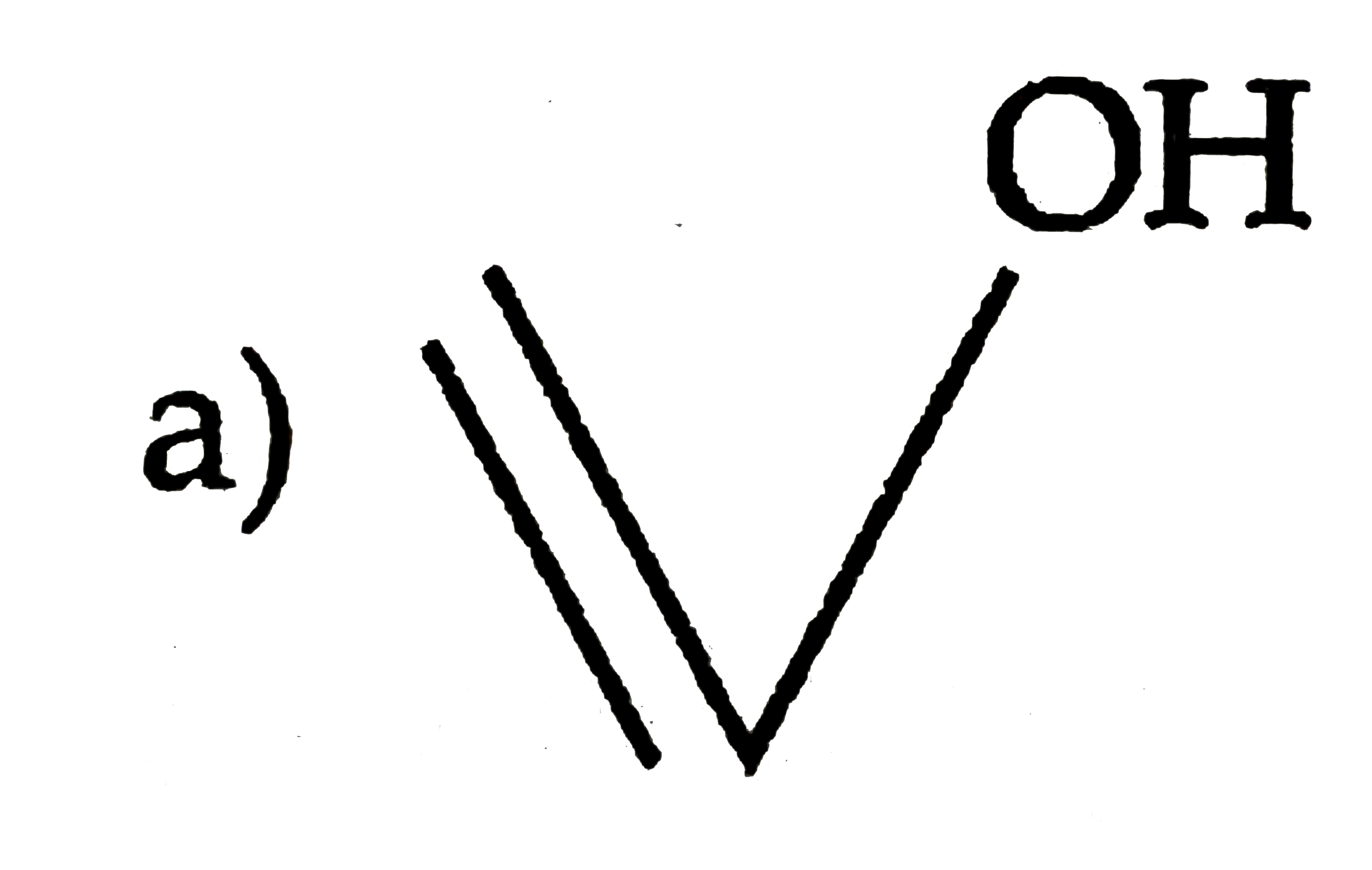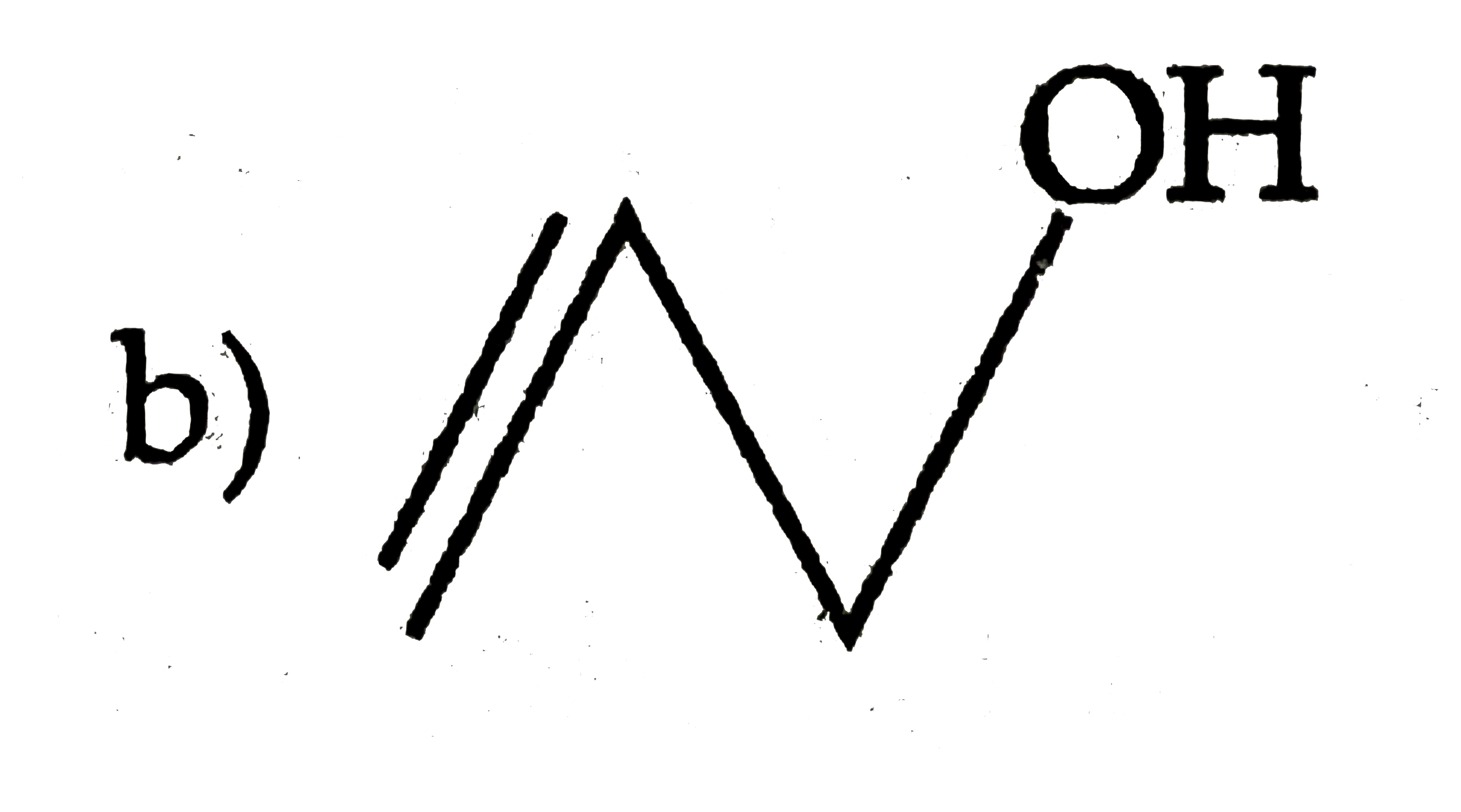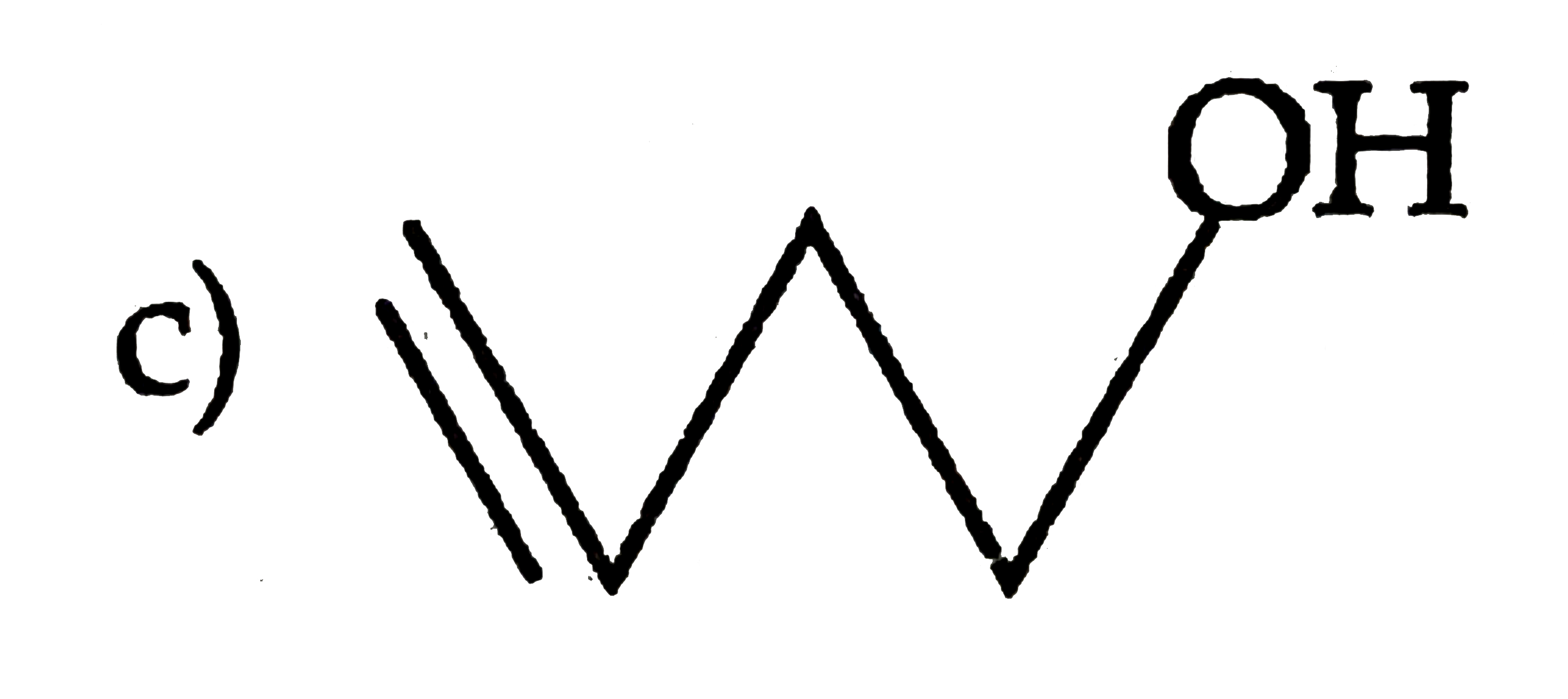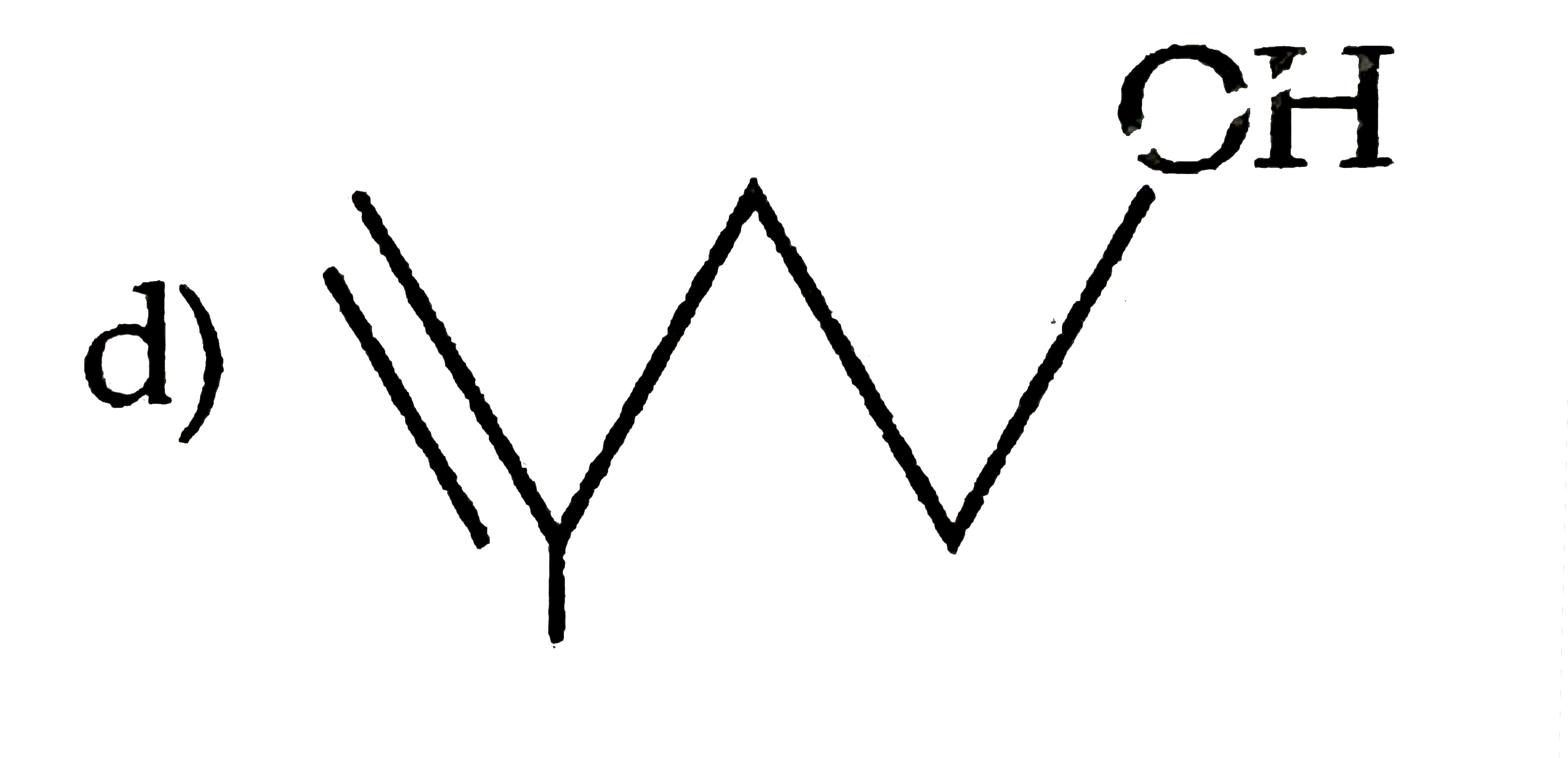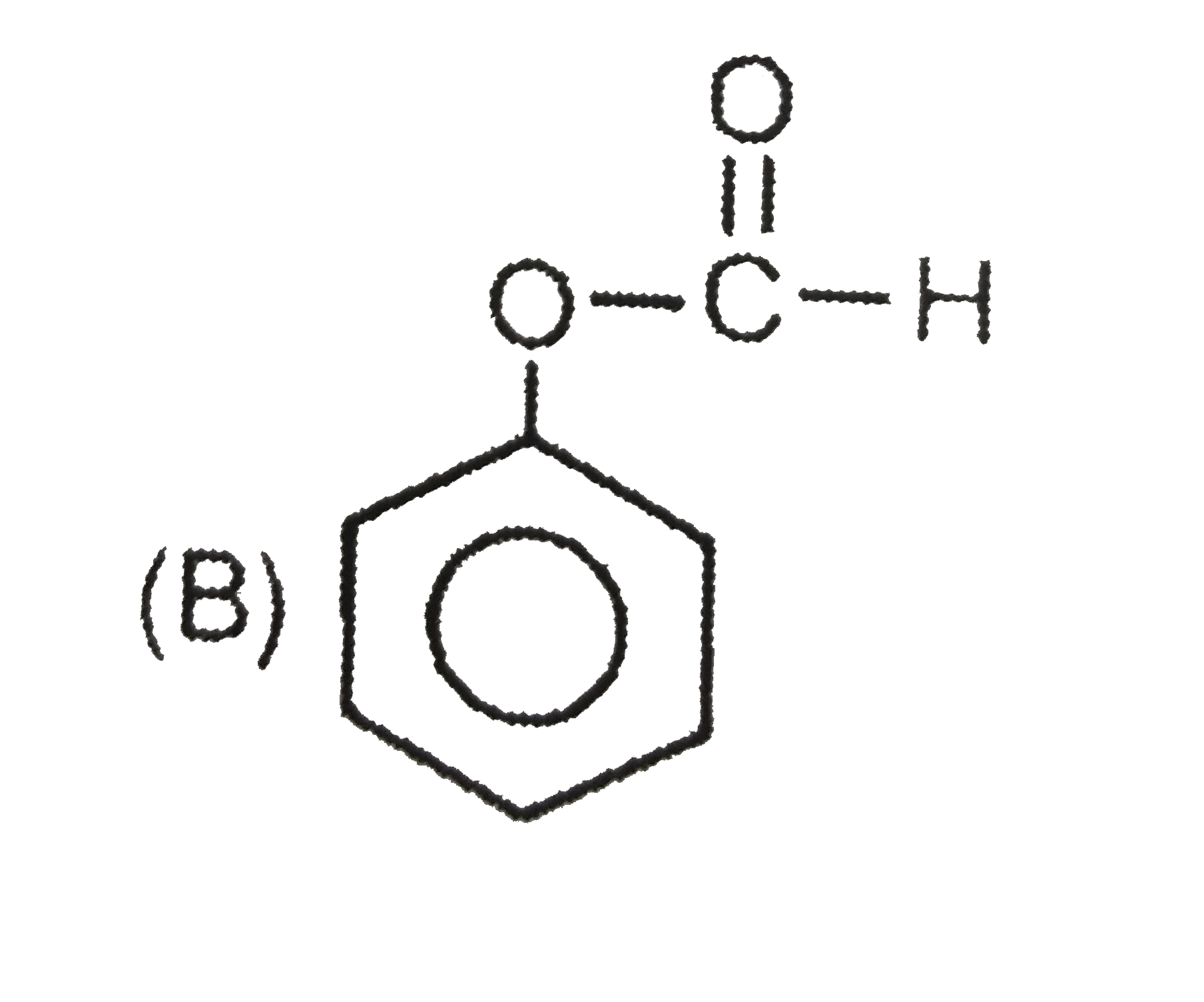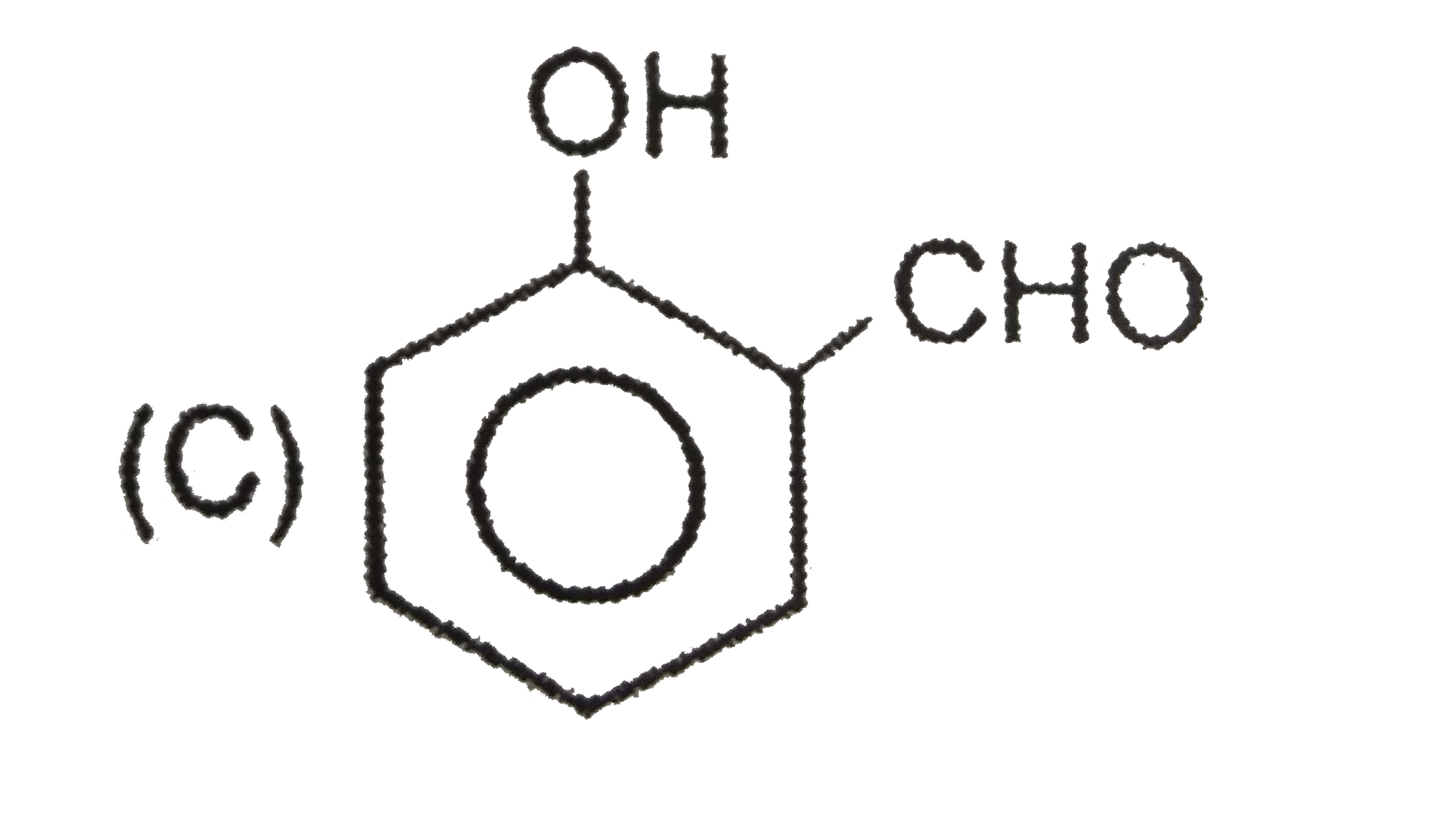Explore topic-wise InterviewSolutions in .
This section includes InterviewSolutions, each offering curated multiple-choice questions to sharpen your knowledge and support exam preparation. Choose a topic below to get started.
| 19401. |
Which of the following can be used to convert ._(7)^(14)N " into " ._(8)^(17)O |
|
Answer» Deutrons |
|
| 19402. |
Which of the following compounds shows tautomerism |
|
Answer» HCHO `{:(""O""OH),("||""|"),(CH_(3)-C-CH_(3)overset("Tautomerism")hArr CH_(3)-C=CH_(2)):}` |
|
| 19403. |
Which of the following acid exists as zwitter ion ? |
|
Answer» Suphanilic ACID 
|
|
| 19404. |
Which statement is correct about chemisorptions? |
|
Answer» It is irreversible in nature |
|
| 19405. |
Which of the following is not tetrahedral in shape ? |
| Answer» Solution :`SF_(4)`is trigonal bipyramidal (See-saw) | |
| 19406. |
What are biomolecules ? Give two examples occurring in living systems. |
| Answer» SOLUTION :These are the imolecules which TAKE part in REACTION eg STARCH, cellulose. | |
| 19407. |
What should be done to increase filteration reaction in ultrafilteration process ? |
|
Answer» To INCREASE temperature |
|
| 19408. |
The reference electrode is made by using |
|
Answer» `ZnCl_2` |
|
| 19409. |
When the following reaction was carried out in a bomb calorimeter, DeltaE is found to be -742.7kJ/mol of NH_(2)CN(s) at 298 K. NH_(2)CN(s)+3/2O_(2)(g)toN_(2)(g)+CO_(2)(g)+H_(2)O(l) Calculate DeltaH_(298) for the reaction. |
| Answer» SOLUTION :`-741.5kJ` | |
| 19410. |
Which of the following represents the Lewis structure of N_(2) molecule ? |
|
Answer» `""_(xx)^(xx)N-=N_(xx)^(xx)` 
|
|
| 19411. |
Which of the following does the best represent the structure of the carboxylate ion. |
|
Answer»
|
|
| 19412. |
Which of the following statement(s) in (are) true ? |
|
Answer» IONISATION energy `prop 1/("Screening EFFECT")` (B)Be and Mg and have `ns^2` configuration (stable configuration) ( C)Due to lanthanide contraction. (D)`r_("metallic")gtr_("covalent")`(covalent bond formation involves the overlapping of orbitals) |
|
| 19413. |
The statement that doesnot belongto bohr 's model of atom is |
|
Answer» the energy of the eletrons in the orbit is quantized |
|
| 19415. |
Write the structures of the major organic product in each of the following: CH_3CH_2CH_2Cl + NaI underset("heat")overset("acetone")(rarr). |
| Answer» SOLUTION :`CH_3-CH_2-CH_2-I` | |
| 19416. |
The vapour pressure of benzene at 25^(@)C is 639.7mmHg and the vapour pressure of solution of a solute in benzene at the same temperature is 631.9mm of mercury. Calculate the molality of the solution |
|
Answer» <P> SOLUTION :We have,`(p^(0)-p)/(p^(0))=(n_(1))/(n_(2))` ……………….(Eqn. 1) or `(n_(1))/(n_(2))=("MOLES of solute")/("moles of solvent")=(639.7-631.9)/(639.7)=0.0122` Thus 1 mole of solvent `(C_(6)H_(6))` contains `0.0122` mole of solute, or `78g` of solvent`(C_(6)H_(6))` contains `0.0122` mole of solute `(C_(6)H_(6)=78)` `:.` MOLALITY `=(0.0122)/(78)xx1000=0.156m` |
|
| 19417. |
What is the reagent used in the conversion of alkyl halide into alkene? |
| Answer» SOLUTION :ALCOHOLIC POTASSIUM HYDROXIDE | |
| 19418. |
Which among the following is a branched chain polymer. |
|
Answer» LDPE |
|
| 19419. |
Which of the statements about solutions of electrolytes is not correct ? |
|
Answer» Conductivity of SOLUTION depends UON SIZE of ions. |
|
| 19420. |
Why are low spin tetrahedral complexes not formed ? |
| Answer» SOLUTION :For TETRAHEDRAL complexes, the CRYSTAL field stabilisation energy is lower than pairing energy. | |
| 19421. |
Which of the following is plant steroid? |
|
Answer» estrogen |
|
| 19422. |
Which of the following order is incorrect? |
|
Answer» `HF gt HCL gt HBr gt HI`- Acidic strength<BR>`CL gt F gt Br GTI `-Electron affinity |
|
| 19423. |
Which of the following reaction does not occur ? |
|
Answer» `F_(2)+2Cl^(- ) to 2F^(-)+ Cl_(2)`<BR>`Br_(2)+2I^(-) to 2Br^(-)+I_(2)` |
|
| 19426. |
Which of the following statements regarding the manufacture of H_2SO_4, by contact process is not true |
|
Answer» Sis burmt in air to form `SO_2` |
|
| 19427. |
Two reactions r_(1) and r_(2) proceed at 25^(@)C at the same rate. The temperature coefficient of the second reaction is 2.5 times of temperature coefficient of the first reaction. The ratio of rates of these reactions at 96^(@)C will be (r_(2)//r_(1)), approx |
|
Answer» `10 : 1` |
|
| 19428. |
Which acts as an additive to petrol? |
|
Answer» GLYCEROL |
|
| 19429. |
Which substance is used as basic refractory material in furnace : |
|
Answer» `Al_2O_3` |
|
| 19430. |
Which of the following order of bond strength is//are correct? (a) C-CgtCl-ClgtS-SgtP-PgtO-O (b) H-HgtNeNgtO-OgtF-F (c) Cl-ClgtBr-BrgtF-FgtI-I (d) H-FgtH-HgtC-CgtN-NgtO-O (e)2ppi-2ppigt2ppi-3ppigt2ppi-3ppigt3ppi-3ppi Options :- |
| Answer» Solution :`N//A` | |
| 19431. |
Transition metals and their oxides are used in industrial processes as: |
|
Answer» Detergents |
|
| 19432. |
White Sn belongs to one of the seven crystal systems. The number of Bravis lattices possible for that monoclinic crystal system |
|
Answer» 2 |
|
| 19433. |
What happens when : (i) An alkyl halide reacts with AgNO_(2) and product is reduced. (ii) An alkyl halide is treated with AgCN and product is hydrolysed. (iii) Methyl magnesium bromide is treated with cyanogens chloride. |
|
Answer» Solution :(i) `R-X + AgNO_(2) underset("-AgX")to R-NO_(2) OVERSET("Sn/HCI") underset([H]) to R-NH_(2)` (ii) `R-X + AgCN underset ("-AgX") to RNC overset(H_(2)O/H^(+))to RNH_(2)+HCOOH ` (iii) `CH_(3)MgBr + CN-CI rightarrow CH_(3)CN + MG lt_(Br)^(CI)` |
|
| 19434. |
Which of the following statements is/are true for [Pt(NH_(3))(H_(2)O)(Cl)_(2)]? |
|
Answer» It has diamagnetic character |
|
| 19435. |
Which of the following is a redox-reaction- |
|
Answer» `2NA[Ag(CN)_(2) ]+Zn rarr Na_(2) [Zn(CN)_(4) ]+2Ag` |
|
| 19436. |
What is the product of the reaction of ethanoyl chloride with diethylcadmium followed by acid hydrolysis? |
| Answer» Solution :`underset("Ethanoyl CHLORIDE")(2CH_(3)COCl)+underset("Diethylcadmium")((CH_(3)CH_(2))Cd) overset("DRY ether")tounderset("BUTANONE")(2CH_(3)COCH_(2)CH_(3))+CdCl_(2)`. | |
| 19437. |
Which of the following statements are correct for ethers? |
|
Answer» Being linked to carbon ATOMS, the oxygen atom in ether is comparatively inert. |
|
| 19438. |
Which of the following compounds will not undergo azo coupling reaction with benzene diazonium chloride ? |
|
Answer» Aniline |
|
| 19439. |
The value of k_2 for the reaction at 27^@C Br_2(l)+Cl_2(g)hArr2BrCl(g) is '1 atm'.At equilibrium in a closed container partial pressure of BrCl gas is 0.1 atm and at this temperature the vapour pressure of Br_2(l) is also 0.1 atm. Then what will be minimum moles of Br_2(l) to be added to 1 mole of Cl_2 , initially to get above equilibrium situation : |
|
Answer» `10/6` MOLES `k_p=((P_(BrCl)))^2/P_(Cl_2)=1` so, `P_(Cl_2)=(P_(BrCl))^2=0.01` atm then at equilibrium, `n_(BrCl)/n_(Cl_2)=0.1/0.01=10=(2x)/(1-x)` So, `10-10x=2x or x=10/12=5/6` moles Moles of `Br_2(l)` required for MAINTAINING vapour PRESSURE of 0.1 atm `=2xx5/6 "moles" =10/6"moles"="moles of" BrCl(g)` Moles required for taking part in reaction=moles of `Cl_2` used up `=5/6` moles . Therefore required total mole `=10/6+5/6=15/6` mole |
|
| 19440. |
Which of the following are used to convert R-CHO to R – CH_(2)OH ? |
|
Answer» `H_(2)//PD` It can also be prepared by using `NaBH_(4)` and `LiAlH_(4)` as a reducing agent. `RCHO+ overset(NaBH_(4))to RCH_(2)OH` `RCHO+ overset(LiAlH_(4))to RCH_(2)OH` Reaction of RMgX with any ALDEHYDE other than methanal gives secondary alcohols not the primary alcohols. 
|
|
| 19441. |
The units of conducivity are : |
|
Answer» `"SIEMENS"^(-1) CM^(-1)` |
|
| 19442. |
Under Wolff- Kishner reduction the conversion may be brought about are |
|
Answer» BENZOPHENONE to DIPHENYL methane |
|
| 19443. |
Which of the following order is correct for Delta_(0)"/"Delta_(t)"/"Delta_(sp) ? |
|
Answer» `[FE(SCN)_(6)]^(3-)gt[Fe(C_(2)O_(4))_(3)]^(3-)` |
|
| 19445. |
Thermodynamic equilibrium involes |
|
Answer» CHEMICAL equilibrium |
|
| 19446. |
Which of the following is positively charged sol? |
| Answer» Answer :A | |
| 19447. |
Which of the following is a gas ? |
|
Answer» `BF_3` |
|
| 19448. |
Which noble gas does not form clathrates: |
|
Answer» Xe |
|
| 19449. |
Which of the following is presipitated when an arsenate reacts withh a magnesium mixture? |
|
Answer» `MgHAsO_(3)` |
|
| 19450. |
Which of the following polymer is formed by anionic addition polymerization ? |
|
Answer» Polythene |
|






